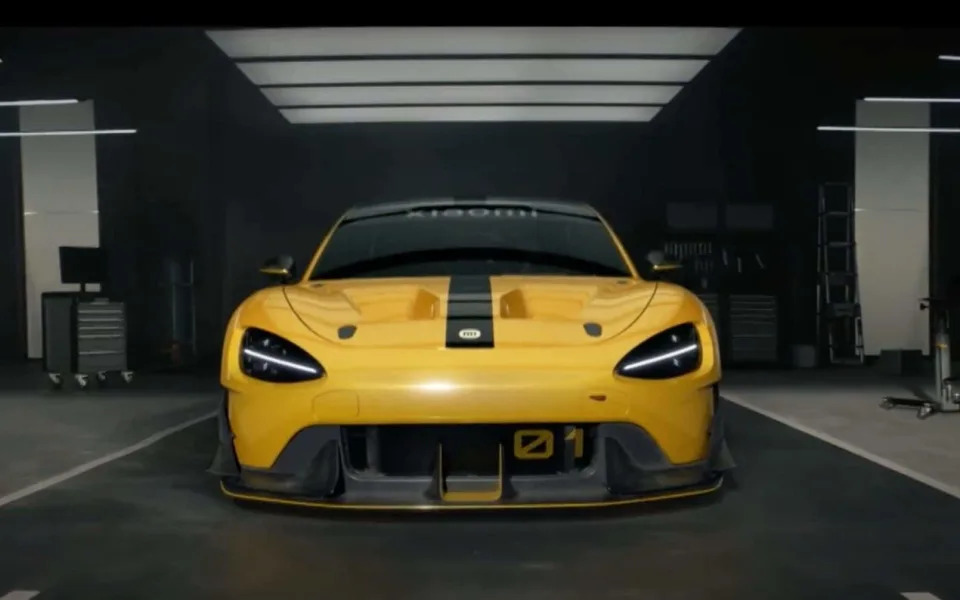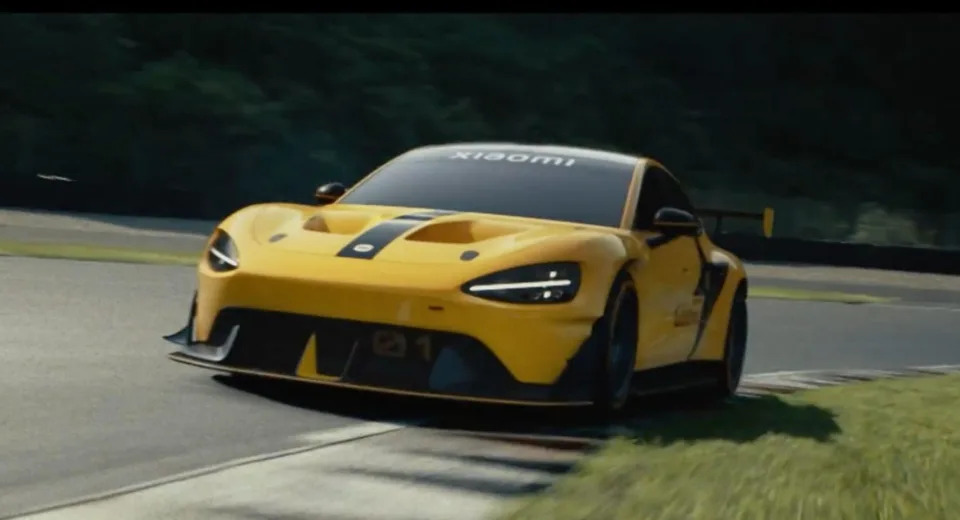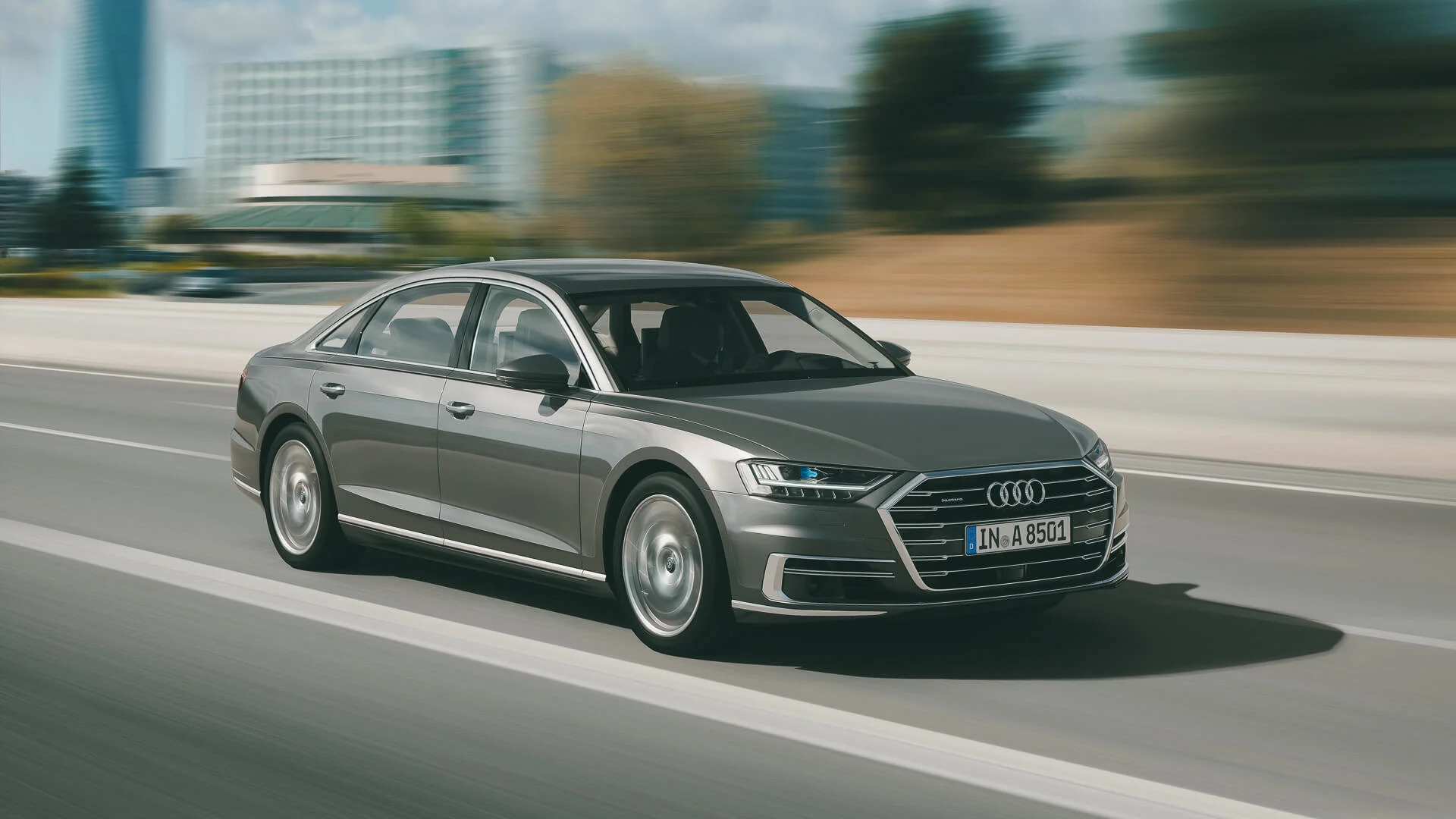Why the 217mph Xiaomi SU7 Ultra is China’s most serious car yet

At first, Peugeot made saws. Its novel manufacturing method produced some of the world’s finest and sturdiest blades, which earned it a reputation for industrial excellence despite its relatively modest size. As it grew, the company began to build coffee grinders, followed by pepper mills, and then the slender steel wires that gave crinoline petticoats their shape.
These thin spokes led the company to make bicycle wheels, then an entire penny farthing, followed by a crude steam-powered automobile and eventually – about 150 years later – the E-3008 electric SUV.
Xiaomi, by contrast, only took about a decade to evolve from a maker of household products to building its first electric car (EV). The Beijing-based gadget manufacturer, founded in 2010, began making mid-range Android handsets in 2011 and is now worth some $53.49bn; business has been good, enabling it to fund forays into virtually every consumer electronics segment. That includes shavers, headphones, robot vacuum cleaners, solar-powered security cameras, a “smart blender”, e-scooters and, now, inevitably, a car.
The SU7 sold out within around a day of its launch, receiving about 90,000 orders in the first 24 hours following its official unveiling. Xiaomi’s reputation for quality products has obviously given it a bit of a head start in its new venture, just as Peugeot’s did over a century ago.

The specifications of the new model are impressive, too – a range of between 435 and 500 miles, depending on trim level, and prices from 215,900 yuan (£23,000) make this large and affordable saloon an extremely compelling offering for domestic and international buyers.
Reviews have been overwhelmingly positive and used versions are changing hands for more than new ones thanks to a seven-month queue. It’s already an astonishing success at home, and has been dubbed “China’s Apple Car”.
The rapidity with which Chinese manufacturers can expand their portfolios from mobile phones to five-star EVs is both impressive and alarming – especially considering the failure of Apple to bring its car to production, and the widespread difficulties faced by legacy brands in the transition to zero-emission vehicles. Ten years ago, when Xiaomi was in its infancy, Chinese cars could barely compete with even the naffest European rivals. Now, though, Xiaomi is just one of many Chinese manufacturers that has seemingly emerged from the depths of Beijing, Shenzhen, Chongqing or Baoding, with products at least on a par with established rivals.
Some, like Xiaomi, are genuinely new-ish entities; others are just invented stage names for existing brands, which are already established in their domestic market but which need a West-facing identity for Europe. (Jaecoo is a good example of this; I recently drove its J7, which would have been a staggeringly accomplished debut considering the brand only launched last April, but it is in fact a rebadged Chery Tansuo 06.)

Somehow, Xiaomi’s ambitions are palpably more audacious than those of the other Chinese brands, which have largely arrived in Europe (or plan to) with middle-of-the-road electric SUVs. The SU7 is clearly a far more polished and progressive product, with class-leading specifications and an attractive design that, candidly, sets it apart from most of its East Asian peers. It’s good-looking, it’s affordable, and it’s aimed squarely at the heart of Europe’s car building industry.
Xiaomi CEO Lei Jun euphemistically refers to Volkswagen as “Competitor A”, and has drawn barely-veiled comparisons between the SU7 and the Group’s key models on more than one occasion. The recent announcement of the souped-up SU7 Ultra, however, was a shot specifically across Porsche’s bow – Jun mentioned his ambition to be the fastest four-door electric car around the famed challenge of the Nurburgring racing circuit in Germany in the next 10 years, which would involve knocking the Porsche Taycan off the top spot.
Xiaomi will send the SU7 Ultra around the track for the first time this October, and while victory seems unlikely, China’s eventual domination of the revered Nordschleife – and by extension Europe’s performance car market – seems somewhat inevitable.
There are some queries about the quality of Chinese cars, whether their handling is quite up to modern European tastes and standards, as well as about data privacy. It’s true that building an efficient, fast car seems to be easier than making one that’s enjoyable to drive. To date, European buyers of Chinese models have simply wanted inexpensive A-to-B runabout EVs and this market has been largely satisfied with China’s first few generations of electric family cars; as the models get more expensive and sophisticated, so too will the tastes of their new owners.

Chinese cars present additional, background concerns about both safety and data privacy, but it’s unclear how well-founded they are. All the Chinese cars tested by Euro NCAP in 2023 and 2024 so far have scored the full five stars suggesting that, on paper at least, these models compare favourably against European rivals.
Widespread worry about Chinese technology hasn’t stopped it from finding its way into Britain’s critical national infrastructure and while the (probably fanciful) idea of our car periodically reporting our whereabouts to the CCP sounds unpalatable, we’re perfectly happy to conduct our entire lives through other Chinese products; Xiaomi is among the most popular mobile phone brands in Britain, suggesting that as a nation we’re happy to trust it with our bank details.
Chinese cars are already chipping away at the lower edges of Britain’s car market (the bits that most legacy manufacturers have neglected) and it could be a while before any make significant inroads in more premium segments. The SU7 has impressed audiences in Asia, and while there are no overt plans to bring it to the UK, it’s evident from its positioning that a European offensive is next.
French and German car brands have enjoyed decades of dominance, but China is proving the playing field to be rather more level than legacy brands believed. Peugeot took 42 years to grow from coffee grinders to bicycles – Xiaomi has transitioned from smart blenders to four-door supercars in about five.
AfriPrime App link: FREE to download...
https://www.amazon.com/Africircle-AfriPrime/dp/B0D2M3F2JT
Car Experts Say Don’t Buy These Luxury Cars That Will Drain Your Bank Account Quick
The definition of a luxury car has changed over the years. A Statista report estimated that luxury vehicles cost a ton of money, around $75,000 on average. However, the manufacturer’s suggested retail price (MSRP) can be significantly lower or higher than that.
According to Kelley Blue Book, certain brands have long been considered luxury. These include Acura, Aston Martin, Audi, Bentley, Ferrari, Jaguar, Lamborghini, Lexus, Lincoln, Mercedes-Benz, Porsche, Tesla and Volvo — to name a few.
As the line between luxury and nonluxury brands blurs, you may be wondering what luxury vehicles might look and feel great to drive but aren’t actually worth the price. GOBankingRates reached out to a few automotive experts to get the answer.
Earning passive income doesn't need to be difficult. You can start this week.
Bugatti Veyron
-
Starting MSRP: Upward of $1 million
-
Cost estimates (annual maintenance and repairs): $20,000 to $30,000
-
Special service costs: $100,000
-
Estimated three- to five-year depreciation: 43%
“Owning certain luxury cars can indeed lead to significant financial drain, primarily due to high maintenance costs, rapid depreciation and expensive insurance premiums,” said Joe Giranda, director of sales and marketing for CFR Classic. “For example, the Bugatti Veyron is incredibly expensive to maintain.”
This vehicle is renowned for its unparalleled engineering and speed, but the high price tag can quickly drain all but the highest-net-worth individuals’ bank accounts. This is largely due to the specialty parts, which are expensive to replace.
“Routine annual servicing costs can exceed $20,000, with tire replacements alone running upward of $30,000,” Giranda said. “Additionally, every few years, a special service is required that can cost around $100,000.”
Rolls-Royce Phantom
-
Starting MSRP (2024 model): $505,750
-
Cost estimates (annual maintenance and repairs): $5,000
-
Estimated three- to five-year depreciation: 40%
“The Rolls-Royce Phantom is synonymous with luxury but comes with substantial costs,” Giranda said. “Maintenance for the Phantom can easily reach $5,000 annually.”
But that’s not all. According to Giranda, this luxury vehicle requires very specific parts that are hard to find and expensive. There’s also insurance to consider.
Generally, car insurance is more expensive on higher-end or pricier vehicles like the Rolls-Royce Phantom. Annual insurance premiums can exceed $10,000 a year, Giranda said.
Range Rover
-
Starting MSRP (2024 model): $109,025
-
Cost estimates (annual maintenance and repairs): $3,000 to $5,000
-
Estimated three- to five-year depreciation: 60%
Range Rovers are known for having fairly frequent and expensive mechanical failures, particularly with their air suspension, electrical systems and engines.
“While it’s an icon of luxury and off-road capability, Range Rovers are notorious for their high maintenance and repair costs,” said Geoff Cudd, consumer advocate and automotive expert at FindTheBestCarPrice.
Kelley Blue Book estimated that the five-year cost of owning a 2024 Range Rover is $169,621. This includes $60,604 in estimated out-of-pocket expenses.
BMW 7 Series
-
Starting MSRP (2024 model): $97,395
-
Cost estimates (annual maintenance and repairs): $2,500 to $4,500
-
Estimated three- to five-year depreciation: 55%
Another luxury vehicle that’s likely to drain your bank account is the BMW 7 Series sedan, according to Cudd.
“This flagship sedan offers a high level of luxury and performance but comes with substantial depreciation and expensive maintenance,” he said.
From routine services like oil changes to parts replacements, BMW 7 owners can expect to spend thousands of dollars on repairs and maintenance. Getting major work done, like replacing an electronic control unit, can be even more expensive.
The five-year cost to own a new BMW 7 Series vehicle is more than $128,000, according to Kelley Blue Book.
Maserati Quattroporte
-
Starting MSRP (2024 model): $140,995
-
Cost estimates (annual maintenance and repairs): $2,000 (up to $6,000 for major repairs)
-
Estimated three- to five-year depreciation: 70%
“The Maserati Quattroporte, while slightly more accessible in price compared to the Bugatti and Rolls-Royce, still presents significant financial challenges,” Giranda said. “Owners can expect to spend around $2,000 annually on maintenance, with additional costs for repairs that frequently arise due to the car’s complex systems. The depreciation rate of Maseratis is also quite steep, which can lead to a significant loss in value over a short period.”
Audi A8
-
Starting MSRP (2024 model): $91,995
-
Cost estimates (annual maintenance and repairs): $4,000
-
Estimated three- to five-year depreciation: 52%
“The A8 is a technologically advanced and comfortable sedan, but it demands frequent and costly maintenance,” Cudd said. “Its complex systems often lead to expensive repairs.”
According to Kelley Blue Book, the five-year cost of owning a 2024 Audi A8 is about $124,000. This includes nearly $61,000 in out-of-pocket expenses.
Mercedes-Benz S-Class
-
Starting MSRP (2024 model): $118,450
-
Cost estimates (annual maintenance and repairs): $3,000 to $5,000
-
Estimated three- to five-year depreciation: 46%
For many car enthusiasts, the Mercedes-Benz S-Class is the peak of indulgence. It’s a sophisticated ride equipped with plenty of technology and intricate systems. But this all leads to potentially expensive repairs and maintenance, which, alongside the high starting price and depreciation, quickly becomes a money pit.
“The S-Class also suffers from rapid depreciation and high maintenance costs,” Cudd said. Annual maintenance and minor repairs can easily cost thousands of dollars. Major repairs can, of course, be much higher than that.
Understanding Luxury Vehicles’ Five-Year Cost to Own
The five-year cost to own a vehicle, as defined by Kelley Blue Book, is the total amount you’re going to have to spend on that vehicle in the first five years of ownership. This includes any upfront or out-of-pocket expenses, like car insurance and fuel, as well as vehicle depreciation, repairs, state fees and financing fees.
Knowing the five-year cost of owning a vehicle can give you a better idea of how much it’ll affect you financially. And, perhaps just as importantly, it can make it easier to decide between two or more vehicles — luxury or otherwise. This can help you save money and choose the right vehicle for you (and your wallet).
AfriPrime App link: FREE to download...
https://www.amazon.com/Africircle-AfriPrime/dp/B0D2M3F2JT
Tesla relaunches long-range Model 3 as its second-cheapest option: 'This is a great deal'
Much like the summer's temperatures, electric vehicles are hot right now. EV sales rose by 20% in 2023 compared to the previous year, thanks to decreasing costs and increased choice among automotive manufacturers.
Tesla, a key player in the EV space, continues its goal to electrify the transportation industry by relaunching the Model 3's Long Range Rear-Wheel-Drive edition as the second-cheapest option for the well-received sedan.
As explained by Electrek, the company stopped selling some versions of the Model 3 while reviving a popular one with the capacity to travel up to 363 miles (EPA estimation) on a single charge. The company announced the long-range model "starting at $29,990* after federal tax credit and estimated gas savings," but Electrek noted the starting price is $42,490 on its website.
As Electrek also noted, the car is eligible for a federal tax credit of $7,500 to reduce the purchase price. And in the long term, customers will save plenty of money by refueling with cleaner, cheaper electricity rather than expensive and polluting gas. That said, it's still a highly unusual and questionable decision to affix $5,000 of those gas savings to the advertised purchase price like that, since money-saving selling points are never used in such a way and doing so is bound to confuse some consumers.
In Tesla's defense on the figure, $5,000 may be a conservative estimate, depending on gas and electricity prices where you live and how many miles you drive the car. If you're buying a long-range model, theoretically you plan to drive it a lot and take it on longer trips, and EnergySage estimates you would save about $8,000 across 200,000 miles in an EV.
Back to the car itself, with the long-range relaunch, you're getting about 100 miles more range on a full charge and faster acceleration for $3,500 more than the $38,990 standard edition, Electrek summarized.
This is not the first time Tesla has sought to cut the cost of its EVs. Just last year, Tesla announced that the Model 3 returned with an 18.5% price reduction compared to its listing of $57,990 in 2022.
The move by Tesla only improves the value EVs bring to consumers, who can save $1,500 a year on gas and maintenance.
It's not just Tesla bringing high-performance EVs. The Hyundai Ioniq 6 and the Lucid Air have both achieved at least 140 miles per gallon equivalent, far surpassing the highest-rated fuel economy for gasoline vehicles, which is typically between 60 to 70 miles per gallon.
EVs are not only cost-effective to run but also release significantly less air pollution, helping to reduce the heat-trapping gases that are overheating our planet.
As EVs grew to 8.5% of new auto registrations across the United States in 2023, the transition to a responsible means of transportation doesn't appear to be slowing down, per The New York Times. Tesla has demonstrated the part it will play in the year ahead.
"This is a great deal," commented one reader on the relaunch.
"They've really made some nice refinements," wrote another.
AfriPrime App link: FREE to download...
- Questions and Answers
- Opinion
- Story/Motivational/Inspiring
- Technology
- Art
- Causes
- Crafts
- Dance
- Drinks
- Film/Movie
- Fitness
- Food
- Jogos
- Gardening
- Health
- Início
- Literature
- Music
- Networking
- Outro
- Party
- Religion
- Shopping
- Sports
- Theater
- Wellness
- News
- Culture
- War machines and policy



